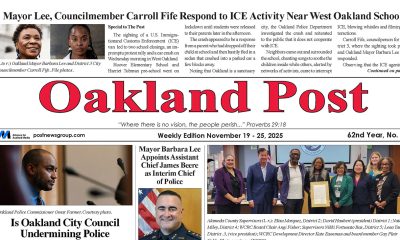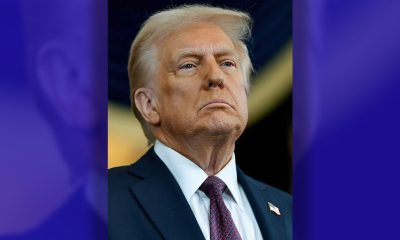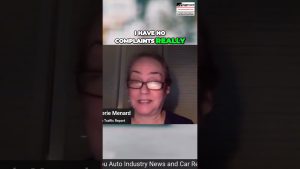National
War Memorial Separates Dead by Race, Divides Southern City

In this photo taken Jan. 22, 2015, shows a plaque honoring World War I soldiers on Greenwood County memorial. The memorial honors its citizens who died in recent wars. The World War I and World War II soldiers are separated into colored and white. Greenwood Mayor Welborn Adams raised $15,000 to put new plaques on the statue, but a state law won’t allow him to put them up. (AP Photo/Jeffrey Collins)
JEFFREY COLLINS, Associated Press
GREENWOOD, S.C. (AP) — Along Main Street in a small South Carolina city, there is war memorial honoring fallen World War I and II soldiers, dividing them into two categories: “white” and “colored.”
Welborn Adams, Greenwood’s white Democratic-leaning mayor, believes the bronze plaques are relics of the South’s scarred past and should be changed in the spirit of equality, replaced like the “colored” water fountains or back entrances to the movie theater that blacks were once forced to use.
Yet the mayor’s attempt to put up new plaques was blocked by a state law that brought the Confederate flag down from the Statehouse dome in 2000. The law forbids altering historical monuments in any way without approval from legislators.
Historians, black and white, have reservations about replacing the plaques, saying they should serve as a reminder of the once-segregated U.S. military.
“Segregation was the accepted social order of that time,” said Eric Williams, who spent 32 years as a historian with the U.S. Park Service. “If we alter the monument, we alter its historical integrity.”
The memorial is owned by the American Legion post in Greenwood and is on city property. On two of its sides, it lists soldiers who died in World War I and World War II that were from Greenwood County. A third side lists Korean and Vietnam War dead from the county without any racial distinction because the military was integrated by that time.
Adams said he asked other South Carolina mayors and doesn’t know of any other similar memorials in the state. Several historians also said they haven’t heard of a monument where fallen soldiers are separated by race.
About a year ago, American Legion post members asked the mayor if he thought he could raise $15,000 privately to change the monument. He was so sure he could, he took out a loan to pay for the new plaques so they could be dedicated on Martin Luther King Jr. Day.
Forty-three donors, almost all white, came through with the money. Adams wrote a $1,000 check himself.
But there was opposition, in part because of a quote from the mayor in a December story in The Index-Journal of Greenwood. “I think if history offends people it needs to be rewritten if possible,” Adams said.
The mayor acknowledged he didn’t choose his words carefully. He later said he meant that while history doesn’t change, the way a community presents itself does.
Days before the King Day ceremony, opponents threatened to try to have Adams arrested — perhaps on a misconduct in office charge — if he went forward with the new plaque. The mayor said he cried in his office when the city’s lawyer told him that opponents were right about the law.
“I wonder if some of the opposition is racism hiding behind history,” said Adams, who was elected mayor in 2008 in this city of 23,000, where about 45 percent of the population is black.
The Confederate flag law says no historical monument, erected by the state or by a local government, may be relocated, removed, disturbed, or altered without a two-thirds vote from state lawmakers. The law lists 10 wars, including the “War Between the States,” — the genteel, Southern name for the Civil War.
The purpose of this part of the law was to appease people who worried 15 years ago that Confederate memorials and street and park names in honor of generals would be torn down in wake of the flag being removed from the Statehouse dome and being put in front of the South Carolina Capitol alongside a Confederate soldier monument. The flag is still a sore point for the NAACP and other black leaders.
A bill has been filed to change the Greenwood memorial and half of the members of the state Senate are listed as sponsors, but some legislators who helped craft the Confederate flag law are leery to bring the divisive issue up again.
“I’ll look at the bill,” said Sen. John Courson, a Republican from Columbia who has been in the Senate since 1985. “But I don’t want to reopen the whole debate. That was last century’s battle.”
Williams, the former Park Service historian, has been one of the most vocal critics. Williams, who is white, wants to see a small display nearby saying the military was segregated back then and that’s why the names are listed the way they are.
Activist Joseph McGill, who spends the night in old slave cabins to get attention to preserve them, agrees. He says talk about switching plaques reminds him of schools that don’t want students reading “Huckleberry Finn” because of racially offensive language from the 1800s is in the book.
“That could just spread the perception that segregation did not exist or wasn’t that bad,” McGill said.
Chad Williams of Brandeis University in Boston has extensively studied black soldiers in World War I. He said he understands the desire to correct a historical injustice, but another sign explaining why the soldiers were separated by race is much more powerful and historically accurate.
“I think it is important to acknowledge the specific context in how African-American soldiers had to serve in the military,” Williams said.
Will Moredock, a freelance journalist trying to get South Carolina to remove the statue of segregationist Gov. Ben Tillman from the Statehouse grounds, said that is shortsighted. Americans are given the power to change laws and even the framework of its government with amendments to the Constitution. So why should historical monuments be any different?
“Every generation has the right to choose the people and the causes it wishes to enshrine in its public places,” Moredock said.
The mayor planned to put the old plaques in the county museum. For now, they remain on the monument and the new ones sit in City Hall storage, waiting for the Legislature to act.
“I am fully aware this is much tougher than I ever expected,” Adams said. “But it’s the right thing to do.”
___
Follow Jeffrey Collins on Twitter at http://twitter.com/JSCollinsAP.
Copyright 2015 The Associated Press. All rights reserved. This material may not be published, broadcast, rewritten or redistributed.
Alameda County
Seth Curry Makes Impressive Debut with the Golden State Warriors
Seth looked comfortable in his new uniform, seamlessly fitting into the Warriors’ offensive and defensive system. He finished the night with an impressive 14 points, becoming one of the team’s top scorers for the game. Seth’s points came in a variety of ways – floaters, spot-up three-pointers, mid-range jumpers, and a handful of aggressive drives that kept the Oklahoma City Thunder defense on its heels.

By Y’Anad Burrell
Tuesday night was anything but ordinary for fans in San Francisco as Seth Curry made his highly anticipated debut as a new member of the Golden State Warriors. Seth didn’t disappoint, delivering a performance that not only showcased his scoring ability but also demonstrated his added value to the team.
At 35, the 12-year NBA veteran on Monday signed a contract to play with the Warriors for the rest of the season.
Seth looked comfortable in his new uniform, seamlessly fitting into the Warriors’ offensive and defensive system. He finished the night with an impressive 14 points, becoming one of the team’s top scorers for the game. Seth’s points came in a variety of ways – floaters, spot-up three-pointers, mid-range jumpers, and a handful of aggressive drives that kept the Oklahoma City Thunder defense on its heels.
One of the most memorable moments of the evening came before Seth even scored his first points. As he checked into the game, the Chase Center erupted into applause, with fans rising to their feet to give the newest Warrior a standing ovation.
The crowd’s reaction was a testament not only to Seth’s reputation as a sharpshooter but also to the excitement he brings to the Warriors. It was clear that fans quickly embraced Seth as one of their own, eager to see what he could bring to the team’s championship aspirations.
Warriors’ superstar Steph Curry – Seth’s brother – did not play due to an injury. One could only imagine what it would be like if the Curry brothers were on the court together. Magic in the making.
Seth’s debut proved to be a turning point for the Warriors. Not only did he contribute on the scoreboard, but he also brought a sense of confidence and composure to the floor.
While their loss last night, OKC 124 – GSW 112, Seth’s impact was a game-changer and there’s more yet to come. Beyond statistics, it was clear that Seth’s presence elevated the team’s performance, giving the Warriors a new force as they look to make a deep playoff run.
#NNPA BlackPress
LIHEAP Funds Released After Weeks of Delay as States and the District Rush to Protect Households from the Cold
BLACKPRESSUSA NEWSWIRE — The federal government has released $3.6 billion in home heating assistance after a delay that left states preparing for the start of winter without the program’s annual funding.

By Stacy M. Brown
Black Press USA Senior National Correspondent
The federal government has released $3.6 billion in home heating assistance after a delay that left states preparing for the start of winter without the program’s annual funding. The Low-Income Home Energy Assistance Program, known as LIHEAP, helps eligible households pay heating and cooling bills. The release follows a shutdown that stretched 43 days and pushed agencies across the country to warn families of possible disruptions.
State officials in Minnesota, Kansas, New York, and Pennsylvania had already issued alerts that the delay could slow the processing of applications or force families to wait until December for help. In Pennsylvania, more than 300,000 households depend on the program each year. Minnesota officials noted that older adults, young children, and people with disabilities face the highest risk as temperatures fall.
The delay also raised concerns among advocates who track household debt tied to rising utility costs. National Energy Assistance Directors Association Executive Director Mark Wolfe said the funds were “essential and long overdue” and added that high arrearages and increased energy prices have strained families seeking help.
Some states faced additional pressure when other services were affected by the shutdown. According to data reviewed by national energy advocates, roughly 68 percent of LIHEAP households also receive nutrition assistance, and the freeze in multiple programs increased the financial burden on low-income residents. Wolfe said families were placed in “an even more precarious situation than usual” as the shutdown stretched into November.
In Maryland, lawmakers urged the Trump administration to release funds after the state recorded its first cold-related death of the season. The Maryland Department of Health reported that a man in his 30s was found outdoors in Frederick County when temperatures dropped. Last winter, the state documented 75 cold-related deaths, the highest number in five years. Rep Kweisi Mfume joined more than 100 House members calling for immediate federal action and said LIHEAP “is not a luxury” for the 100,000 Maryland households that rely on it. He added that seniors and veterans would be placed at risk if the program remained stalled.
Maryland Gov. Wes Moore used $10.1 million in state funds to keep benefits moving, but noted that states cannot routinely replace federal dollars. His administration said families that rely on medical equipment requiring electricity are particularly vulnerable.
The District of Columbia has already mapped out its FY26 LIHEAP structure in documents filed with the federal government. The District’s plan shows that heating assistance, cooling assistance, weatherization, and year-round crisis assistance operate from October 1 through September 30. The District allocates 50 percent of its LIHEAP funds to heating assistance, 10 percent to cooling, 13 percent to year-round crisis assistance, 15 percent to weatherization, and 10 percent to administrative costs. Two percent is used for services that help residents reduce energy needs, including education on reading utility bills and identifying energy waste.
The District’s plan lists a minimum LIHEAP benefit of $200 and a maximum of $1,800 for both heating and cooling assistance. Crisis benefits are provided separately and may reach up to $500 when needed to resolve an emergency. The plan states that a household is considered in crisis if it has been disconnected from energy service, if heating oil is at 5 percent or less of capacity, or if the household has at least $200 owed after the regular benefit is applied.
The District’s filing notes that LIHEAP staff conduct outreach through community meetings, senior housing sites, Advisory Neighborhood Commissions, social media, posters, and mass mailings. The plan confirms that LIHEAP applicants can apply in person, by mail, by email, or through a mobile-friendly online application and that physically disabled residents may request in-home visits.
As agencies nationwide begin distributing the newly released funds, states continue working through large volumes of applications. Wolfe said LIHEAP administrators “have been notified that the award letters have gone out and the states can begin to draw down the funds.”
#NNPA BlackPress
Seven Steps to Help Your Child Build Meaningful Connections
BLACKPRESSUSA NEWSWIRE — Swinging side by side with a friend on the playground. Sharing chalk over bright, colorful sidewalk drawings. Hiding behind a tree during a spirited game of hide-and-seek. These simple moments between children may seem small, but they matter more than we think

By Niyoka McCoy, Ed.D., Chief Learning Officer, Stride/K12
Swinging side by side with a friend on the playground. Sharing chalk over bright, colorful sidewalk drawings. Hiding behind a tree during a spirited game of hide-and-seek. These simple moments between children may seem small, but they matter more than we think: They lay the foundation for some of life’s most important skills.
Through everyday play, young children begin learning essential social and emotional skills like sharing, resolving conflicts, showing empathy, and managing their emotions. These social skills help shape emotional growth and set kids up for long-term success. Socialization in early childhood isn’t just a “nice-to-have”—it’s essential for development.
Yet today, many young children who haven’t yet started school aren’t getting enough consistent, meaningful interaction with peers. Research shows that there’s a decline in active free play and peer socialization when compared to previous generations.
There are many reasons for this. Children who are home with a parent during the day may spend most of their time with adults, limiting opportunities for peer play. Those in daycare or preschool may have restricted free play, and large classrooms can reduce supervision and social coaching. Some children live in rural areas, are homebound due to illness, have full schedules, or rely on screens to fill their playtime. And for some families, finding other families with young children to connect with isn’t easy.
While these challenges can feel significant, opportunities for connection still exist in every community. Families can take simple steps to help children build friendships, create a sense of belonging, and strengthen social skills. Here are some ideas to get started:
- Storytime sessions at libraries or local bookstores
- Community offerings such as parent-child workshops, art, music, gymnastics, swimming, or sports programs
- Weekly events at children’s museums, which may include art projects, music workshops, or science experiments
- Outdoor exploration, where kids can play with peers
- Local parenting groups that organize playdates and group activities
- Volunteer opportunities where children can participate, such as pet adoption events or packing meals at a food bank
- Classes for kids at local businesses, including hardware, grocery, or craft stores
Some of these community activities are free or low-cost and give kids the chance to build friendships and practice social skills. Parents can also model positive social behavior by interacting with other parents and encouraging their children to play with their peers.
These may seem like small moments of connection, but they can have a powerful impact. Every time your child shares a toy, plays make-believe with peers, or races a friend down the slide, they’re not just playing—they’re learning the skills that build confidence, empathy, and lasting friendships. And it’s good for you, too. Creating intentional opportunities for play also helps you strengthen your own network of parents who can support one another as your children grow together.
-

 Activism3 weeks ago
Activism3 weeks agoOakland Post: Week of November 12 – 18, 2025
-

 Activism3 weeks ago
Activism3 weeks agoIN MEMORIAM: William ‘Bill’ Patterson, 94
-

 Activism3 weeks ago
Activism3 weeks agoHow Charles R. Drew University Navigated More Than $20 Million in Fed Cuts – Still Prioritizing Students and Community Health
-

 Bay Area3 weeks ago
Bay Area3 weeks agoNo Justice in the Justice System
-

 #NNPA BlackPress3 weeks ago
#NNPA BlackPress3 weeks agoLewis Hamilton set to start LAST in Saturday Night’s Las Vegas Grand Prix
-

 #NNPA BlackPress2 weeks ago
#NNPA BlackPress2 weeks agoBeyoncé and Jay-Z make rare public appearance with Lewis Hamilton at Las Vegas Grand Prix
-

 Activism2 weeks ago
Activism2 weeks agoOakland Post: Week of November 19 – 25, 2025
-

 #NNPA BlackPress4 weeks ago
#NNPA BlackPress4 weeks agoThe Perfumed Hand of Hypocrisy: Trump Hosted Former Terror Suspect While America Condemns a Muslim Mayor


























































